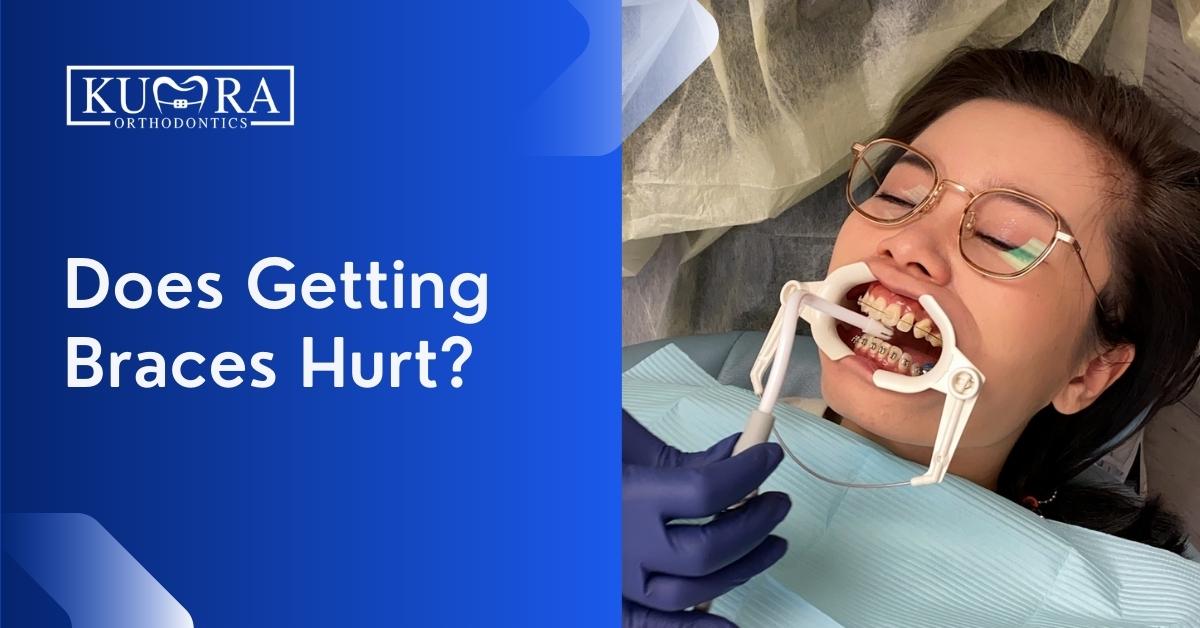Embarking on the journey to straighten crooked teeth can be exciting, but it’s also natural to wonder: Does getting braces hurt? The truth is, while each individual’s experience can vary, discomfort is a common part of the process. Understanding what to expect when getting braces can help you prepare for the sensation and alleviate concerns about the various kinds of braces pain you might encounter.
What to Expect with New Braces
Braces are activated with a wire when they are attached to the teeth, applying continuous pressure for movement. This innovative use of shape memory wire can lead to a sensation of discomfort or pain, typically felt for a few days to a week after the wire is attached to the new brackets.
To further understand the journey with braces, let’s delve into the different stages of adjustment and discomfort associated with this orthodontic treatment.
Soreness Post-Adjustment
The first few days to a week after braces, including expanders and wires, are put in place, and post-adjustment discomfort is common. This is when the brackets with wires begin their work of realigning your crooked teeth, and your mouth is adjusting to the new hardware. It’s important to remember that this soreness is a normal part of the process, and your orthodontist can provide tips for managing any discomfort.
Lips and Cheeks Adjustment
Your lips and cheeks may take a week or two to adjust to the presence of braces. Initially, the metal wires and brackets might feel strange, but this feeling subsides as you get used to them. Over time, the inside of your mouth will toughen up, and the braces will become less noticeable to your inner cheeks and lips.
Needing an orthodontic appointment?
Visit Kumra Orthodontics Washington, DC or Kumra Orthodontics Stafford, VA, and request an appointment with us!
Types of Pain Associated with Braces
When braces are first applied to your teeth, you’re likely to experience a variety of pains. There’s the mild discomfort that comes from the brackets and wires being adjusted to your current body of dental alignment. Then there’s the ongoing pain that can persist for a few days after braces are fitted. Some patients report sharp pain, especially when biting down, while others only feel a dull ache. These sensations are your mouth’s way of adapting to the additional pressure exerted by the new fixtures in your mouth.
How to Manage Pain After You Get Braces
In the initial days following the placement of braces, experiencing soreness is a typical response as your teeth start the realignment process. Over-the-counter pain relievers prove to be highly effective during this period, offering relief from discomfort. Additionally, employing ice packs can be an excellent method for alleviating pain. Applying these cold compresses to the affected area not only helps in managing the mild pain and soreness but also reduces inflammation, providing a soothing effect and enhancing comfort during this crucial adjustment phase.
Food to Avoid to Minimize Pain and Discomfort
When you have braces, it’s not just about adjusting to the new feeling in your mouth; it’s also crucial to adjust your diet to minimize pain and discomfort. The goal is to avoid food that can increase the risk of breaking the brackets or that might exacerbate pain levels. To prevent additional pressure on your braces and avoid exacerbating any mild pain, certain food are best left off the menu.
Avoid Hard Food to Protect Your Braces
Firstly, hard food such as nuts, hard candies, and ice should be avoided. These can cause significant discomfort by exerting additional pressure on the teeth and braces when biting down. Moreover, they can damage the brackets with wires and elastic bands, potentially leading to emergency visits to the orthodontist.
Steer Clear of Sticky Culprits
Secondly, sticky food like caramel, gum, and toffee are problematic as well. They can adhere to the braces, pulling on the brackets and flexible wire, which not only increases the risk of damage but can also cause sharp pain as the teeth are pulled in unwanted directions. These sticky culprits can lodge under the braces, leading to issues with dental hygiene and additional discomfort.
The Trouble with Chewy food
Lastly, chewy food such as tough cuts of meat, bagels, or pizza crust can pose challenges. The effort required to chew these food can add undue stress to the sensitive wire and cause ongoing pain. The relentless pulling and flexing of the braces can lead to severe pain, making the days after braces adjustments particularly uncomfortable.
By avoiding these types of food, you can help ensure a more comfortable experience with your braces and protect the integrity of the orthodontic appliances. Opting for softer and more braces-friendly options can make your adjustment period less painful and your treatment more effective in the long run.
Additional Appliances and Their Roles
If your orthodontic treatment includes rubber bands or elastic bands, you might feel additional pressure as these elements work to correct bite and alignment issues. Removable retainers follow braces and maintain the position of your teeth. Although they might introduce new areas of soreness, it’s typically less severe than the initial braces pain.
Experience Gentle and Personalized Care at Kumra Orthodontics
At Kumra Orthodontics, we believe that getting braces should be a comfortable and reassuring experience. Our dedicated team provides gentle care, ensuring that every step of your orthodontic journey is as smooth and pain-free as possible. From the initial consultation to the final adjustment, our personalized approach is tailored to meet your unique needs and preferences. We are committed to creating beautiful smiles in a welcoming and caring environment.
If you’re considering braces and looking for expert care with a gentle touch, contact Kumra Orthodontics today. Let us guide you towards a healthier, more confident smile with our specialized orthodontic services.


